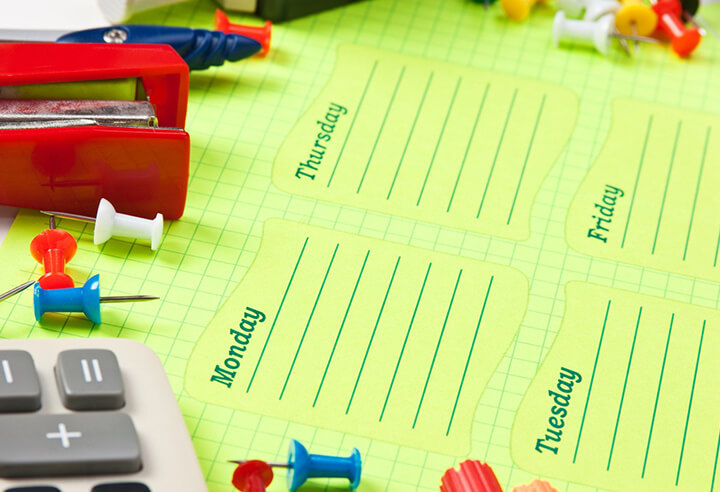Today’s blog comes to us from renowned organizer, Julie Morgenstern. Her best-selling book, “Organizing From the Inside Out” is one of our favorites.

Here’s an interesting challenge: How do you structure your time when you are not tied to an outside schedule? A reader inspired us with this note:
“I am retired and struggling to accomplish the important things because I get so bogged down in daily must-dos. I’d like help with overwhelm and staying on track to fulfill the big life purpose stuff.”
Whether you crave retirement or dread it (because you don’t know how you would fill all that free time), it’s astonishing how days can suddenly slip through your fingers when the routine of the workday is gone. The most mundane tasks (shopping, laundry, or researching a new cell phone plan) can suddenly take over your entire day, leaving you exhausted and drifting in a sea of unsatisfying drudgery.
It’s not just retirement that can put us in this situation. Sudden job loss, illness, or choosing to stay home to raise kids all remove the external structure generated by our work lives. As much as we may sometimes feel slaves to our work schedules, the structure is also powerful and grounding as an organizing principle for our lives.
So, how do you organize your days to be meaningful and fulfilling when you are not tied to an outside schedule? Here are three strategies that can help
1. Preserve the structure of the work day.
When you think about it, the structure of our workdays is an extension of the structure of our school days, a routine that has been with us since we started kindergarten. That predictable, reliable architecture subdivides our days into smaller blocks of time. You wake up, get ready and leave the house. There’s a morning activity, lunchtime, followed by an afternoon activity. Then dinner time, an evening activity, and bedtime. It is a helpful infrastructure in that it is easier (and arguably more interesting) to organize 2 or 3 hours at a time rather than 24 amorphous hours.
2. Fill the structure with activities you choose.
Once you embrace the built-in structure that is at your fingertips, the only question becomes what you pour into that structure. When you are in charge of the routine, you get to choose what activities you will assign to the morning, afternoon, and evening blocks. Choose activities you find meaningful, fulfilling, and fun. It might take some experimentation, but the good news is–you have the freedom to explore and find the things that bring you energy and satisfaction.
3. Assign themes to time blocks:
I have noticed certain patterns of what people crave time for when they are too busy with work. We all tend to crave time for Physical health (exercise, body care); Learning (expanding your knowledge through reading, adventures, classes, etc); and Relationships (spending time connecting with and expressing love for the important people in our lives). You can take these themes and assign them to different time blocks in the day (like being your own camp director). For example, perhaps mornings are for physical health, afternoons are for learning, and evenings are for relationships. Of course, you may occasionally need to spend time during the week or weekend for life’s drudgery stuff, but it can be contained to just one or two blocks, as needed. That still preserves plenty of time blocks for more fulfilling activities.
When you have the gift of freedom to organize your own schedule as you wish, the goal is to fill it with what’s most important to you. Stick to the beautiful architecture that you’ve had your whole life, but embrace the opportunity to fill that architecture with activities of your own choosing. Things that really ignite your spirit and allow you to explore all of who you are in your best self.
Calendars and planners are available from www.jacobsgardner.com

